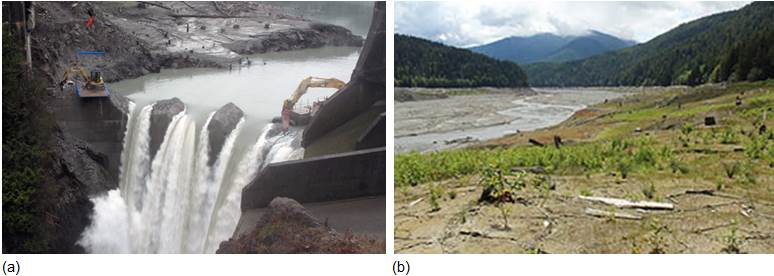Since 1975, approximately 1200 dams have been removed from rivers in the United States, including 72 in 2014. Some of these dams were in danger of failure, others had become functionally obsolete because their reservoirs had filled with sediment, and a few were removed to restore the rivers’ ecosystems. Originally, these dams were built for water storage, hydropower, irrigation, navigation, and flood control; however, most were built with little regard for the environmental consequences. See also: Dam; Ecosystem; Fluvial sediments; Reservoir; River

Unless properly engineered, dams trap the sediments and nutrients needed to maintain river banks and channels, floodplains, beaches, barrier islands, and their accompanying ecosystems and habitats. Storing water behind dams also reduces flow rates both upstream (in the reservoir) and downstream, and thereby degrades the water quality by raising temperatures and lowering dissolved oxygen levels. In addition, dams are barriers to fish migrating to upstream spawning grounds. See also: Coastal landforms; Delta; Floodplain
Only a thousand dams out of the approximately 80,000 in the United States have been removed, but the early results suggest that the response of rivers to dam removals is promising. As reported in the journal Science (May 2015), researchers from the U.S. Geological Survey and the U.S. Forest Service who examined 100 dam removals found that sediments from the former reservoirs were transported downstream quickly and that the river channels, beaches, and deltas were restored within months or a few years. Fish also migrated upriver soon after dam removals. Recolonizations and restorations of displaced plants, however, are taking longer. See also: Depositional systems and environments; Erosion; Fisheries ecology; Freshwater ecosystem; River engineering; Stream transport and deposition; Water resources





